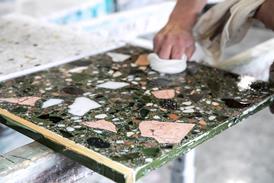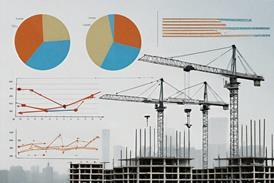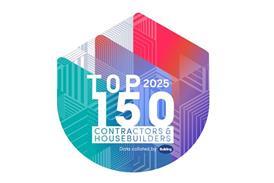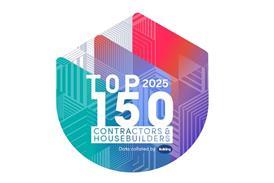Building Use Studies has built a database of occupant responses from nearly 20 years of building investigations. Latterly that database has been enhanced by the PROBE studies, which have combined design and energy audits with the results from occupant surveys.
Inevitably the PROBE research project has generated a prodigious amount of data. As much of this is only pertinent to particular buildings, the Department of the Environment Transport and the Regions (DETR) contracted the PROBE team to undertake a strategic review of the PROBE material and to devise some generic messages.
Such studies provide the opportunity for a rounded analysis of what determines happy, comfortable and productive people, and how each variable can be tweaked to obtain maximum performance from buildings.
So what makes people happy?
Success from the occupant standpoint often means perceived beneficial outcomes, like comfort, health and productivity, as well as aesthetic delight and fitness for purpose. It is vital to consider these factors together. No one factor will determine whether people are happy with their environment.
It is important to stress that occupancy surveys should discriminate between permanent and peripatetic occupants – crucial for understanding academic buildings or magistrates courts. Polling visitors on their views of a building enables responses from permanent staff to be benchmarked. This can cover issues such as aesthetic delight, ease of navigation around the building and the immediate ease or use of controls and facilities.
Generally speaking occupants' responses are highest when absolute conditions are stable, and fall within acceptable (though not necessarily ideal) comfort parameters for the majority of the time. Satisfaction is also high when relative conditions are changed quickly in response to other fluctuations, such as the weather or occupant activities.
The degree of user control is also vital. Occupants appreciate resolving their own problems rather than having solutions foisted upon them, either by automatic controls or inappropriate management of the facilities.
The extent to which satisfaction can be achieved depends crucially on the occupying organisations' capability to manage a building effectively. Virtuous features which make these factors easier to achieve include:
- shallower-plan forms and cellular spaces;
- places to go to at break times;
- thermal mass and airtightness;
- stable and comfortable internal conditions;
- non-sedentary workforce (including low screen-based work);
- usable controls and interfaces;
- predictable occupancy patterns; and
- a well informed and responsive facilities management.
Negative features which tend to make comfort more difficult to achieve (and require more management intensity) include:
- deep plan forms and open work areas;
- larger workgroups with mixed activities;
- higher densities;
- long working hours;
- the presence of complex technologies;
- absent or intrusive facilities management.
Difficulties tend to arise when organisations confuse means and treating those which are means (such as higher densities) as ends in themselves. However, many variables are auto-correlated, that is, health, comfort and productivity are inextricably linked. Different combinations of variables will lead to different outcomes, while the presence of one factor can compensate for the absence of another.
Noise is a chronic problem which warrants closer attention by building designers
These variances are not easy for building designers to understand, least of all apply. Two PROBE buildings – in many ways at opposite ends of the scale – serve to illustrate how non-physical variables can compensate for physical variables, the latter often being imposed on designers by institutional design guidance.
The Elizabeth Fry Building1 enjoys most of the virtuous features listed above, while the negative features are mostly absent. Hence the building has been touted as an exemplar for occupant satisfaction and productivity2. The building scores very highly on occupant comfort – the cellular offices in particular work very well.
In its physical attributes Tanfield House3 is the reverse. The building is deep-plan, with high occupant densities. It is also technically far more complicated than the Elizabeth Fry Building and therefore much riskier in that there are more things to go wrong.
Despite all this Tanfield House has also scored highly on occupant comfort. Why? Because the absence of virtuous factors has been compensated by diligent and professional facilities management.
What this tells us is that while comfort and productivity scores are reasonable surrogates for occupant satisfaction, one should not ignore other issues which can either combine to produce happy and productive people. Of course, the opposite is also true.
Factors for failure and success
By averaging out the scores for the seven main comfort variables (summer and winter temperature, summer and winter air quality, lighting, noise and overall comfort), buildings of all four ventilation types appear in the top 15% of the comfort/productivity databases.
However, it is the mixed-mode buildings – those with a range of comfort systems or with systems according to needs – which score consistently well in recent occupancy surveys. In the PROBE dataset the Elizabeth Fry Building comes out best, with Rotherham Magistrates Court4 next best.
Although some air conditioned buildings do well, the success of mixed-mode buildings – particularly with respect to summertime temperature – tells us something about occupant preferences and the ability of natural ventilation to satisfy comfort requirements. Other research3 backs up the finding that, given a choice, occupants will usually opt for natural ventilation. Only when conditions are exceptionally hot and humid will they resort to the air conditioning.
While mode of ventilation is doubtless important, it is not necessarily significant if other factors conspire against it. For example, the interfaces between a building and its users will dictate how well a particular ventilation system performs.
These issues come into sharp focus in so-called advanced naturally ventilated buildings. This term describes buildings where sophisticated user or automatic controls have been added to a principally naturally ventilated building with the objective of optimising building performance. In so doing, the need for more intensive servicing is avoided.
Where such buildings have been subject to a performance check, they have scored lowest in the occupancy survey. In fact, all the advanced naturally ventilated buildings cluster towards the bottom of comfort distribution in both the PROBE dataset and the larger Building Use Studies dataset.
Why is this? The primary reason seems to be the gap which exists between occupants' desired response from automated systems, and the designers/contractors ability to interpret that expectation and turn it into something practical in the brief and specification. That can be compounded by a limited range of products available to do the job, with any shortcomings exaggerated by limitations in the control algorithms. Problems with commissioning, operation and maintenance can be the final nail in the coffin in terms of occupant satisfaction.
Motorised windows often fall into this category – the disadvantages of automatic control apply, while the use of complementary manual controls (including manual override) are often constrained.
Occupants signal their discomfort with advanced natural ventilation in various ways, such as the difficulty of reaching consensus on window operation and blind position, and a negative reaction to draughts, noise and other external annoyances such as fumes and insects.
None of this is sensed by controls systems, which are preoccupied with temperature, relative humidity and maintained illuminance. Inevitably such under-performing systems tend to fall into default states which minimise conflict and inconvenience but which are sub-optimal, such as slightly hot, with blinds down and lights on.
Noise is also emerging as a major factor in occupant satisfaction. The PROBE building studies reveal that people who perceive that noise is poor or very poor, report a negative effect on their perception of productivity. Buildings with lots of unsegregated activities invariably score worse for noise, with cellular and/or low density spaces coming out best.
Only about 10% of buildings studied have relatively good or bad noise scores, while the other 90% fall in the mid range. Clearly noise is a chronic problem which warrants closer attention by building designers.
All the PROBE surveys show that occupants want more natural light. As might be expected, deeper plan buildings are home to occupants who perceive a lack of natural light. However, glare from sun and sky bedevils even narrow-plan buildings, which may suggest a lack of design forethought.
Occupants who complain of too little natural light also tend to complain of too much electric light. Glare from electric lighting is consistently reported to be worse in offices with open-plan layouts, although the offices with uplighting studied in PROBE are exceptions.
In general, people at window seats tend to be more comfortable, thus more productive. Window locations can be a relief from poorer conditions elsewhere, demonstrated at one building where staff unofficially opened windows to improve ventilation. At the mechanically ventilated Elizabeth Fry Building, the openable windows made things even better.
Conclusion
The myth of the modern building is that the services can be fit and forget. Buy it, and the electronics will do the rest. The truth is that systems, particularly those with any degree of sophistication, are really fit and manage.
Complex engineering and control systems work best in an environment such as large air conditioned offices, where the occupier resources a high level of facilities and engineering management. Where occupant interaction is required, and where the building envelope is dynamic rather than passive and humans are in close contact with technology, serious problems can arise.
Source
Building Sustainable Design
Reference
Adrian Leaman is principal of Building Use Studies, and a member of the PROBE Team. 1PROBE 14, Building Services Journal, 4/98. 2New Practice Final Report 106, BRECSU 1999. 3PROBE 1, Building Services Journal, 9/95. 4PROBE 12, Building Services Journal, 12/97.




















